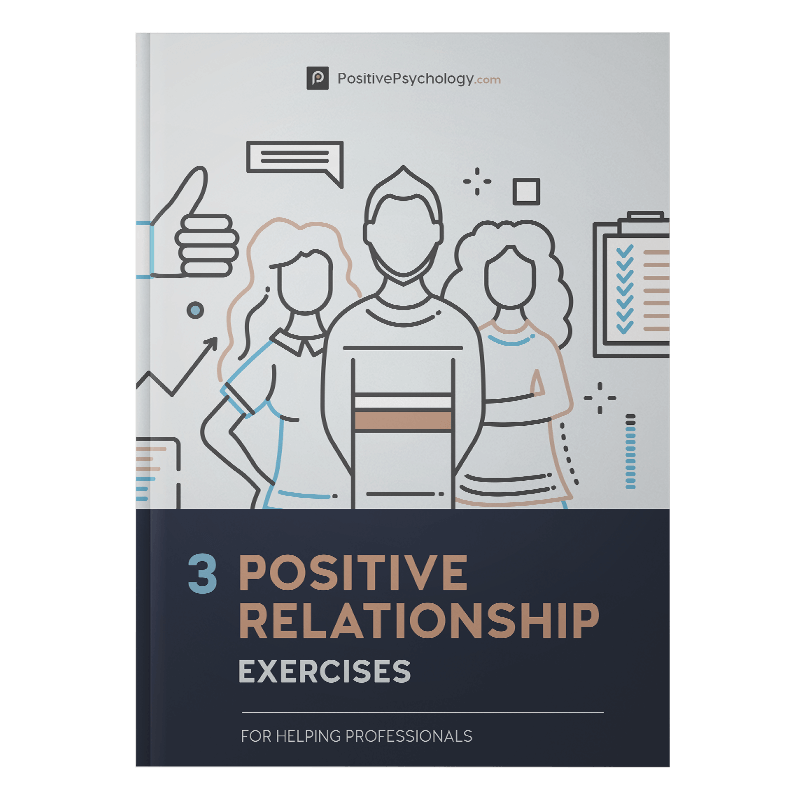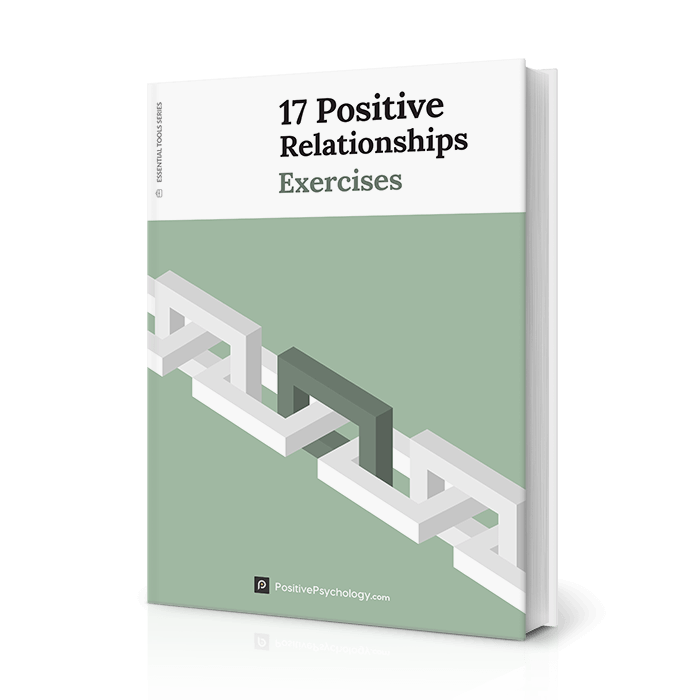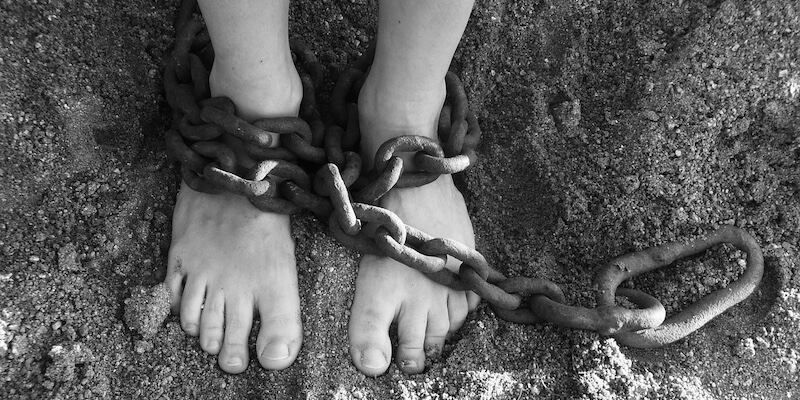Attachment Styles in Children (& How to Raise Secure Kids)
 As a parent, have you ever wondered how your child’s attachment to you would affect them as an adult?
As a parent, have you ever wondered how your child’s attachment to you would affect them as an adult?
Would they become a ‘mama’s boy’ or a ‘cold fish?’
Attachment is a concept that is often underrated in the role it plays throughout childhood and beyond.
It is crucial that parents or caregivers find the best way to draw out positive attachments in children. This process will mold and shape them into mentally healthy children and adults.
With information about different attachment styles and how secure attachments in children can bring out the best in them, this article will review and answer several questions about attachment.
Before you continue, we thought you might like to download our three Positive Relationships Exercises for free. These detailed, science-based exercises will help you or your clients build healthy, life-enriching relationships.
This Article Contains:
A Look at Early Childhood Attachment Theory
Child psychiatrist John Bowlby is considered to be the founder of attachment theory.
What interested Bowlby was how children relate to others (especially their caregivers) and how this develops in their mind and behavior (Bretherton, 1998).
Bowlby noticed children’s distress when separated from their parents, especially in a stranger’s presence or an unfamiliar place. This led to Bowlby (1958) developing what is now referred to as childhood attachment theory.
The theory is based around Bowlby’s ideas of how children make sense of their distress, behavior, loss, and separation from their caregiver. Bowlby (1969, 1973, 1980) wrote a highly original and groundbreaking trilogy of books entitled Attachment and Loss.
One of Bowlby’s students and colleagues, Mary Ainsworth, took his ideas one step further. Through her interest in developmental psychology, she helped advance Bowlby’s ideas with a series of experiments known as the ‘Strange Situation’ (Ainsworth & Whittig, 1969).
This was a standardized procedure investigating how attachments differ between different children. In the ‘Strange Situation,’ the mother leaves the child in a room in a series of scenarios and configurations: with a stranger, completely alone, and with the stranger after they join the mother and child and then leave again. Researchers then observed the behaviors of the child toward the mother and assessed their attachment style based on the interaction.
If you want to learn much more about this fascinating topic, we recommend What Is Attachment Theory? Bowlby’s 4 Stages Explained, as well as Harlow’s Monkey Experiments: 3 Findings About Attachment.
The Role of Attachment Styles in Childhood

It depends very much on the caregivers’ responsiveness and sensitivity to the infant (Cassidy, Jones, & Shaver, 2013).
A secure bond formed early in life can positively affect long-term mental health and the resilience of children (Winston & Chicot, 2016). A positive and secure attachment makes all the difference to a child’s life outcomes, and this will be described further on.
Attachment styles are typically categorized as either secure or insecure, and refer to how one individual relates to another. There are three types of insecure attachment styles in children. Two of these were discovered by Ainsworth, Blehar, Waters, and Wall (1978). The third (disorganized attachment) was found later by Main and Solomon (1986).
There is only one secure attachment style, also referred to as an organized attachment style. We’ll first look at the three insecure styles and their role in childhood, before detailing the secure attachment style.
1. The role of an ambivalent (or anxious-preoccupied) attachment style
Children with an ambivalent/anxious-preoccupied style cling to their caregivers, are anxious and guarded around strangers, exhibit distress when their caregiver leaves, but then remain ambivalent when they return. Ainsworth et al. (1978) found that such children resisted interactions with their mother when they were reunited, even showing aggression toward the mother for abandoning them.
A review of ambivalent attachment styles in children found that mothers who have lowered maternal ability tend to have children with this type of attachment style. It is not a very common attachment style, with less than 15% of infants displaying this (Cassidy & Berlin, 1994).
This style of attachment can create an over-dependency of the child on the caregiver. The child is suspicious of strangers. This will act as an intuitive protective factor, as it ensures that others do not harm them.
This style ultimately creates a clingy child, who will develop into an overly dependent adult, worried when relationships end and showing reluctance to gain close proximity with others, particularly in romantic relationships.
2. The role of avoidant-dismissive attachment style
When caregivers are not emotionally available, children may develop an avoidant and dismissive attachment style. Ainsworth et al. (1978) found these children were not distressed when separated from their mothers and engaged with the stranger similarly to their mother. When the mother returned, they showed some avoidance signs, such as avoiding eye contact and turning away.
If children do not experience their caregivers’ sensitivity to their needs, they may develop physical and emotional independence. In the short term, this can act as a positive, protective factor. However, it can be damaging in the long term as they disconnect from their feelings and emotional needs.
As adults, such individuals will experience difficulty with close and intimate relationships, as they cannot share their emotions and feelings with their partners. The ending of a relationship will not cause them any distress.
3. The role of a disorganized attachment style
After discovering that many infants did not fit into the groups of secure, ambivalent, or avoidant attachment, Main and Solomon (1986) described the disorganized attachment type. Children – and their parents – with disorganized attachment showed confusion and fear, reinforcing each other’s behaviors.
A child can develop a disorganized attachment when they have not received coherent caregiving or have been mistreated, neglected, or traumatized by their caregiver. This results in a child being fearful and avoidant, as they don’t know what to expect. Their behavior is disorganized and confused; they may respond with aggression or emotional distress, and can’t self-soothe.
Strangely, the child is seen to seek comfort and reassurance from the same adult, but quickly withdraw again. Their disorganized template does not allow them to experience coherent emotions or behaviors. Even when caregivers are abusive, children will attach to them because this is their intrinsic nature (Prior & Glaser, 2006).
The disorganized attachment style is definitely not straightforward because it is an attachment pattern derived from trauma, fear, mistrust, and often abuse. The child is never able to feel safe, despite seeking proximity. The disorganized child may be thinking, ‘Can I trust you? Shall I come to you, or shall I run away from you? I’m confused by you.’
4. The role of a secure attachment style
A secure attachment style is the most desired attachment style in children. It best places them to develop positively for the future.
When children have a secure attachment style, they show distress when their caregiver leaves the room, but they quickly settle and compose themselves when their caregiver returns.
Children with a secure attachment style feel protected by their caregivers and that they can depend upon them. Children who have a secure attachment style can explore and play more, using their caregiver as the base from which to embark upon their exploration of the world.
Securely attached children show a higher level of maturity, increased empathy, and less disruptive and angry behavior (Leblanc, Dégeilh, Daneault, Beauchamp, & Bernier, 2017). Moving on to adulthood, these children will have long-term relationships, fewer trust issues, and greater self-esteem; enjoy engaging with others; and reciprocate feelings.
Which is the best attachment style to have as a child?
Children’s attachment styles allow us to understand what their relationships with others will be like as children and adults. Attachment styles can tell us about the types of challenges that a child may face as they develop and how likely they are to manage these challenges.
We can see the different attachment styles as different internal working models that have arisen from events, interactions, and relationships (Main, Kaplan, & Cassidy, 1985). This model is a set of expectations and beliefs the child holds about the self, others, and the relationships they have between themselves and others.
For instance, if a child feels unloved and rejected, they will feel avoidant, further reinforcing the caregiver’s behavior and the child’s internal working model.
If a child feels overly anxious and needy, they will want adult attention, resulting in the caregiver further ignoring what is perceived to be their attention-seeking behavior.
If a child is frightened and distressed and the parent’s response is inadequate, this inconsistency can lead the child to further feelings of distress and reinforce that the parent is not available for them. The child will feel they are unworthy of being loved and cared for, assuming others cannot be relied upon to support and help them (Bretherton, 1999).
A secure attachment style in childhood places the child in the most advantageous position in life.
The secure child learns that some of their behaviors are linked to positive behaviors from their caregiver. When they get this response, they feel loved and nurtured.
Children who are securely attached will be more resilient, adaptable, hardy, competent, and confident, and develop better relationships with others into adulthood, improving their life chances. This attachment style is most sought after for a fulfilling life.
Therefore, we must do as much as possible to achieve this attachment style in children from an early age – not an easy task. Still, positive parenting and caregiving can contribute considerably to achieving this.
How to Raise Secure Children – 101
Now that we know securely attached children will get the most out of life and thrive to their full potential, it is important to understand how you can achieve this as a parent.
The following are loosely based around the ‘Triple C’ Program, created by an organization called ‘All Things to All People’ (2021), based in Indianapolis, which helps children and families improve their communication and reduce unwanted behaviors.
The ‘Triple C’ to raising secure children
1. Consistency
Consistency is important for children to feel that their caregivers are reliable and consistent, leading to feelings of stability and secureness.
A secure attachment needs to be based on trust, and a child will trust a caregiver if their response is appropriate. Your child needs to know you are there for them and rely on you to meet their needs. Ensure your child knows that if they are scared, lonely, cold, thirsty or hungry, they can come to you, and you will place their needs first.
2. Communication
Communication is essential as children develop. You must listen to your child and allow them to make choices so they can gain autonomy, learn from mistakes, and understand why certain choices should be avoided and others may be more positive for them.
Good communication from a caregiver tells the child that they are respected and being treated as a person and not a child, that their opinion matters too. This helps to boost their self-esteem and confidence.
3. Consequence
Children should feel that they will never be treated negatively or abused. If children fear harsh consequences, they will experience instability and fear their caregiver.
Such fear is unhealthy and can lead to the disorganized attachment style in children described earlier. Instead, it is important for caregivers to set healthy boundaries, allowing children to understand that there are limits to what they can do.
6 Tips to Foster Mentally Healthy Kids

Such strategies will allow greater satisfaction and fulfillment for the caregiver and achieve positive mental wellbeing in children.
1. Promote your child’s confidence and self-concept
Enhance your child’s confidence and self-esteem through praise and positive reinforcement, such as ‘Well done,’ ‘You’re amazing,‘ and ‘That’s wonderful.’
Small tangible rewards such as extra playtime, a sweet treat, or an enjoyable activity can work well, but try not to overcompensate with these. Your child will feel appreciated and eager to perform well to experience the positivity of praise and reward.
Children are more likely to achieve better if they feel loved and valued. Children love to impress if they feel appreciated.
2. Pay close attention to your child’s verbal and nonverbal behavior
Paying attention to your child’s verbal and nonverbal behavior can allow you to understand when something may not be quite right and when your child needs to talk about something.
Your child will appreciate your interest in their wellbeing and willingness to articulate their problems. Problems are resolved at a much earlier stage, and your child will feel they are supported. Try to get to know your child inside and out.
3. Allow your child to make mistakes and experience failure
It is important to allow your child to experience failure and not be too overprotected.
Failure contributes to building resilience and encourages understanding, hardiness, empathy, and a desire to succeed and overcome obstacles. With the bad will always come the good, as they say.
4. Develop your child’s ability to be creative
Allow your child to become bored; there is nothing wrong with that at all. Free time allows reflective thought and creativity. During these moments, children will develop ideas and new ways of thinking, solve problems, daydream, imagine, reflect on things that have happened, and think of ways to rectify things for the future.
This is when clarity strikes; you know that lightbulb moment we have all experienced at some point. Creativity works as a protective factor against poor mental health because it stimulates the brain to feel positive emotions, reduces stress and anxiety, and gives a sense of pride and purpose.
5. Encourage your child to build relationships
Children should be encouraged to make friendships and build on their social skills.
Encourage them to engage socially in face-to-face interactions with others to develop their relationship-building skills. These will buffer against poor mental health in the future.
Building friendships improves the skills of sharing and communication, and develops personality and identity.
6. Model good behavior to your child
Social learning theory and the famous ‘Bobo doll’ experiment (Bandura, 1977) offer a good explanation as to why children may behave negatively. They love to imitate. It is essential to display good life skills to your child so they emulate the same positive behavior.
As a parent, think about eating healthily to avoid obesity and health issues. Exercise to improve energy levels and fitness. Show children they need adequate sleep, and limit their use of digital technology.
Display respect and empathy to others, and they will learn this too. This can help stop your child from being bullied. Promoting such healthy lifestyle behaviors in your child improves physical, mental, and emotional health and increases their sense of security and stability.
When love isn’t enough – Melissa Johnson
PositivePsychology.com’s Relevant Resources
The following resources are available on PositivePsychology.com and will help you understand how to parent children positively and ensure you are raising a secure, happy, and mentally healthy child.
- Attachment Styles in Therapy: Worksheets & Handouts is an excellent supplementary article to this, as it provides helpful handouts regarding attachment styles.
- What Is Separation Anxiety? contains a range of worksheets to help combat separation anxiety in children who have not established a secure attachment with their caregivers.
- Fostering Healthy Relationships: 60 Helpful Worksheets has a selection of parent–child worksheets focusing on fostering the secure relationship between the parents and child.
If you’re looking for more science-based ways to help others build healthy relationships, this collection contains 17 validated positive relationships tools for practitioners. Use them to help others form healthier, more nurturing, and life-enriching relationships.
A Take-Home Message
Attachment theory is a powerful model that explains how the earliest experiences and relationships affect the development of children and their outcomes as adults.
Caregivers must understand the importance of their interactions with children, as this will enable children to achieve a secure attachment base from which they can thrive, develop, and flourish.
There are many strategies that parents can adopt with children from infancy. If parents are not sure about the correct approach, they should improve their skills and gain confidence and knowledge by training in positive parenting.
The securely attached child will gain the most positive experiences in their life journey because of their early life interactions with their caregivers.
Ideally, that is the outcome you want for your child: to make healthy contributions to society, to have strong self-esteem and successful long-term relationships, and ultimately to raise equally engaging and well-balanced children of their own.
We hope you enjoyed reading this article. Don’t forget to download our three Positive Relationships Exercises for free.
- Ainsworth, M. D. S., Blehar, M. C., Waters, E., & Wall, S. (1978). Patterns of attachment: A psychological study of the strange situation. Lawrence Erlbaum Associates.
- Ainsworth, M., & Whittig, B. A. (1969). Attachment and the exploratory behavior of one-year-olds in a strange situation. In B. M. Foss (Ed.) Determinants of infant behavior (vol. 4) (pp. 113–136). Methuen.
- All Things to All People. (n.d.). Triple C Program. Retrieved from https://allthings2allpeople.com/triple-c-program/
- Bandura, A. (1977). Self-efficacy: Toward a unifying theory of behavioral change. Psychological Review, 84(2), 191–215.
- Bowlby, J. (1958). The nature of the child’s tie to his mother. International Journal of Psychoanalysis, 39, 350–373.
- Bowlby, J. (1969). Attachment and loss: Volume 1: Attachment. Hogarth Press.
- Bowlby, J. (1973). Attachment and loss: Volume 2: Anger and anxiety. Hogarth Press.
- Bowlby, J. (1980). Attachment and loss: Volume 3: Loss, sadness and depression. Hogarth Press.
- Bretherton, I. (1998). Attachment and psychoanalysis: Reunion in progress. Social Development, 7, 132–136.
- Bretherton, I. (1999). Updating the ‘internal working model’ construct: Some reflections. Attachment & Human Development, 1(3), 343–357.
- Cassidy, J., & Berlin, L. J. (1994). The insecure/ambivalent pattern of attachment: Theory and research. Child Development, 65(4), 971–991.
- Cassidy, J., Jones, J., & Shaver, P. R. (2013). Contributions of attachment theory and research: A framework for future research, translation, and policy. Development and Psychopathology, 65, 1415–1434.
- Leblanc, É., Dégeilh, F., Daneault, V., Beauchamp, M. H., & Bernier, A. (2017). Attachment security in infancy: A preliminary study of prospective links to brain morphometry in late childhood. Frontiers in Psychology, 8.
- Main, M., Kaplan, N., & Cassidy, J. (1985). Security in infancy, childhood and adulthood: A move to the level of representation. In I. Bretherton & E. Waters (Eds.), Growing points of attachment theory and research. Monographs of the Society for Research in Child Development, 50(1–2), 66–104. University of Chicago Press.
- Main, M., & Solomon, J. (1986). Discovery of an insecure-disorganized/disoriented attachment pattern. In T. B. Brazelton & M. W. Yogman (Eds.), Affective development in infancy. Ablex.
- Prior, V., & Glaser, D. (2006). Understanding attachment and attachment disorders: Theory, evidence and practice. Jessica Kingsley.
- Winston, R., & Chicot, R. (2016). The importance of early bonding on the long-term mental health and resilience of children. London Journal of Primary Care, 8(1), 12–14.
Let us know your thoughts
Read other articles by their category
- Body & Brain (50)
- Coaching & Application (57)
- Compassion (26)
- Counseling (51)
- Emotional Intelligence (24)
- Gratitude (18)
- Grief & Bereavement (21)
- Happiness & SWB (40)
- Meaning & Values (26)
- Meditation (20)
- Mindfulness (45)
- Motivation & Goals (45)
- Optimism & Mindset (34)
- Positive CBT (29)
- Positive Communication (20)
- Positive Education (47)
- Positive Emotions (33)
- Positive Leadership (18)
- Positive Parenting (4)
- Positive Psychology (33)
- Positive Workplace (37)
- Productivity (17)
- Relationships (46)
- Resilience & Coping (38)
- Self Awareness (21)
- Self Esteem (38)
- Strengths & Virtues (32)
- Stress & Burnout Prevention (34)
- Theory & Books (46)
- Therapy Exercises (37)
- Types of Therapy (64)






What our readers think
Can attachment styles be modified if A child develops an unhealthy style of attachment,? and if so, how so?
Hi Terry,
Great question. The answer is yes! And the two key ways are through therapy (schema therapy is often appropriate for this) and relationships with others capable of secure attachment. You can read more about these two methods here.
Hope this helps!
– Nicole | Community Manager
I am a psychology degree student and have been using positive psychology resources to help with my assignments, as they provide an easy understanding of topics. I’m currently doing an assignment for the developmental psychology module and have found the attachment styles piece really helpful. I found the different attachment styles difficult to understand in textbooks, but this piece simplifies it & makes it a lot easier to understand.
Dear Marihah
I am very glad to hear that you found this article useful. If you are a psychology student, you will definitely find many of the articles on this site to be helpful for your essays and assignments. They are written in a very nice style which allows even the more complicated topics to be more digestible. The articles are all referenced and you can then look up the referenced material to supplement the reading you are doing for your studies.
I appreciate your feedback.
Thank you
Saima